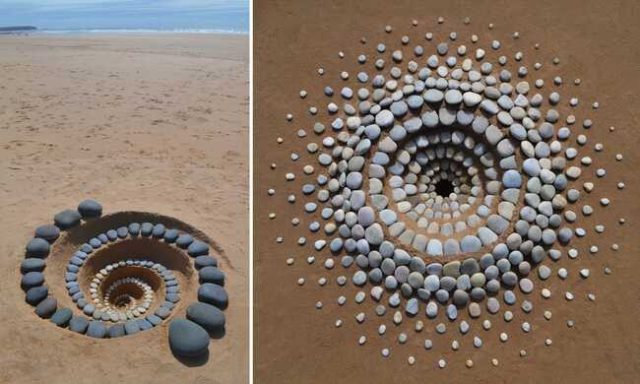
In a heartwarming testament to enduring love, a couple who had celebrated 60 years of marriage recreated a cherished moment from their past. The scene unfolded when the grandmother decided to try on her wedding dress, a beautiful vintage gown that had witnessed six decades of shared memories and countless moments of joy. The couple’s granddaughter, Ali Odom, captured the touching moment and shared it on TikTok, revealing Continue reading “Grandma Tries on Her Wedding Dress After 60 Years of Marriage and Grandpa Can’t Take His Eyes off of Her” »

In a heartwarming display of innocence and kindness, a 10-year-old boy named Troy captured the hearts of many with a charming letter he wrote to his neighbors. Eagerly reaching out to them, he expressed his excitement about the arrival of a new furry friend in the neighborhood—a golden retriever puppy. In his handwritten note, Continue reading “10 Y.O. Boy Writes A Letter To His Neighbor Saying “I’m Wondering If Maybe After This Virus You Need A Dog Sitter”” »

Kayzen Hunter, an 8-year-old boy from Little Rock, Arkansas, has proven that age is no barrier to empathy and kindness. His heartwarming story revolves around his favorite waiter, Devonte Gardner, at the local Waffle House. The Hunters, a family from Little Rock, made it a tradition to visit the restaurant every weekend, where Devonte served them with a friendly smile. Over time, the waiter-customer relationship evolved into a genuine friendship between Continue reading “8-Year Old Boy Raises $120,000 to Support His Favorite Waiter Through Hard Times” »

Embarking on a nostalgic journey, TikToker Matthew Ables recently attempted a whimsical adventure to Disney World armed with a 46-year-old ticket that had been tucked away in his family’s possessions for generations. This vintage piece lacked an expiration date, piquing Ables’ curiosity and prompting him to undertake a pilgrimage to the enchanting theme park in Orlando. In a video chronicling his experience, Ables shared his excitement, acknowledging the potential absurdity of thinking a decades-old ticket could still grant him access to the Magic Kingdom. Continue reading “Man Travels to Disney World and Tries To Enter the Park With a 46-Year-Old Ticket” »

Rowan and Tim Giles’ vibrant shared kids’ room in their eclectic, Scandinavian-inspired Cheshire home is a testament to resourceful design and family collaboration. Faced with the challenge of needing to borrow space from one room to enhance another during their home renovation, the couple decided to make their children’s shared bedroom even more spacious, totaling an impressive 193 square feet. Despite the necessity of reclaiming space for a Continue reading “This Colorful Shared Kids’ Room Has Private Spaces and Storage For Days” »

Crafted by Portugal-based Madeiguincho, the ‘Raposa’ tiny house stands out as a timber dwelling that harmonizes with its natural surroundings while prioritizing an open and airy interior. Built on a double-axle trailer, this tiny home spans approximately 23 feet in length and eight feet in width, demonstrating a thoughtful design suited for one or two occupants. Emphasizing the use of natural materials, the entire exterior and interior are clad Continue reading “The ‘Raposa’ Tiny House Prioritizes an Airy Interior Feel” »

Artist Jon Foreman transforms the serene beauty of the beach into captivating installations crafted from found stones, shells, and driftwood. Immersed in the meditative ambiance of the shore, Foreman draws inspiration from the tranquil setting, channeling its essence into his artwork. His pieces, scattered along the sandy expanse, seamlessly blend with the natural surroundings, paying homage to the coastal environment. Whether mirroring the rhythmic patterns of waves with carefully Continue reading “Artist Turns Found Stones and Shells Into Beautiful Beach Installations” »

A recent sensation in the culinary world has emerged with the opening of a Lego-themed restaurant that has taken the internet by storm. A viral video showcasing the unique dining experience has amassed 4.6 million views, leaving viewers in awe. The restaurant, part of ‘The Lego House’ in Denmark, offers patrons the chance to place their orders using actual Lego bricks. Upon arrival, customers are handed a bag of Lego bricks and a menu that correlates each Continue reading “Viral Lego Restaurant Lets You Order Using Actual Lego Blocks” »

In a heartwarming tale at Birdworld in Surrey, England, a remarkable bond has formed between two African Penguins, Penguin and Squid. Squid, a three-year-old penguin, has been diagnosed with cataracts, a condition clouding her vision. Despite the challenges, Penguin has stepped up as her devoted guide, offering unwavering support during busy feeding times. Continue reading “Penguin Becomes ‘Guide Bird’ Companion For Zoo Pal Suffering with Cataracts: Waddle I do Without You?” »


























